When you think of Pizza Hut, it’s not just the taste of cheesy slices and crispy crusts that comes to mind, it’s also the iconic red roof logo that has become a symbol of comfort food around the world.
Over the years, Pizza Hut’s logo has gone through several transformations, each reflecting the spirit of its time while staying true to the brand’s identity.
Exploring the history of Pizza Hut’s logo design gives us more than a look at branding—it offers a glimpse into how a global food icon continues to connect with people through both taste and timeless visuals and that’s what we are going to learn more about today.
The beginning: 1958-1970
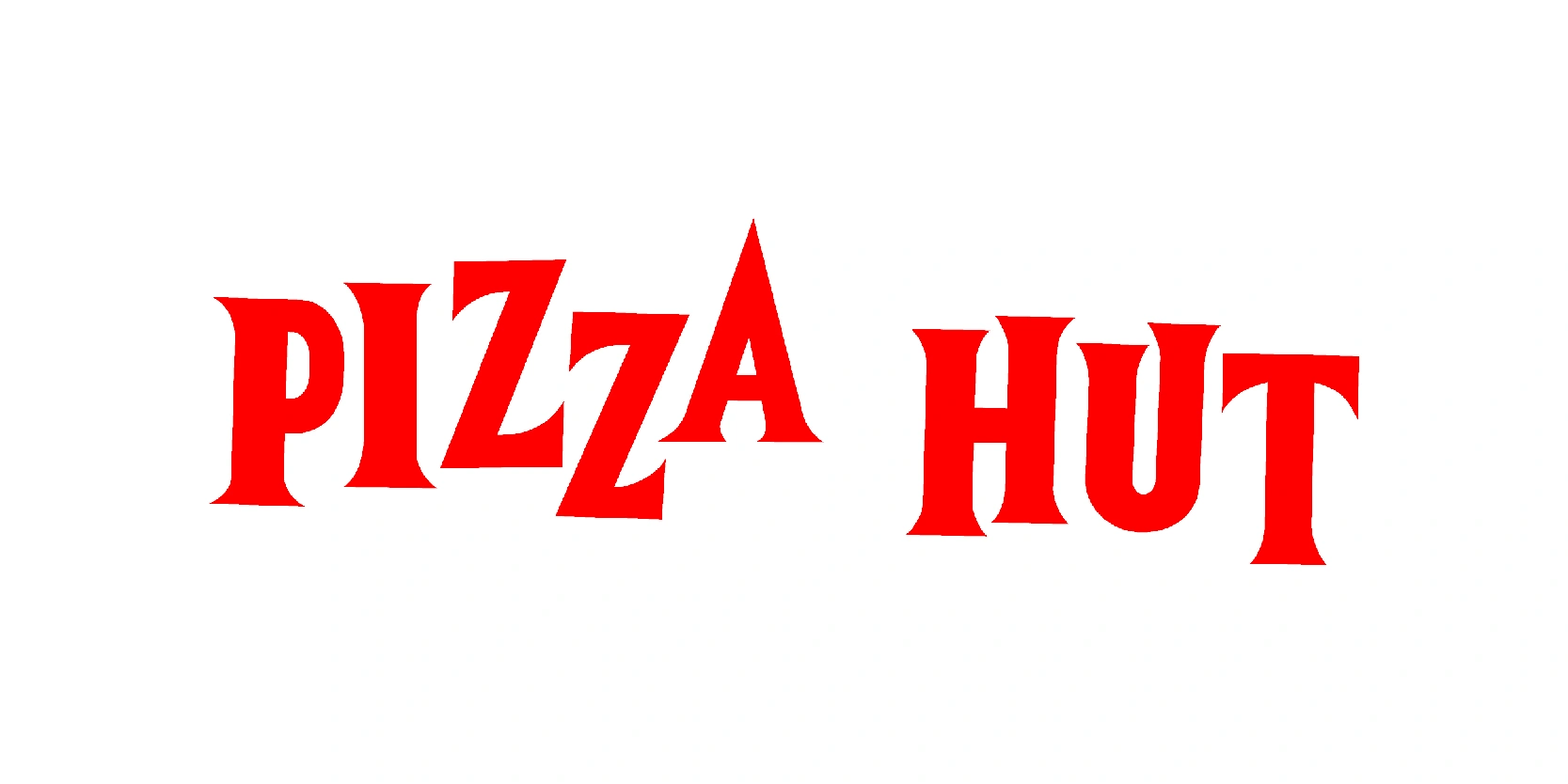
The very first Pizza Hut logo, introduced in 1958, captured the bold and adventurous spirit of the new restaurant chain. It featured the words “Pizza Hut” in bright red, using a distinctive, playful typeface with sharp angles and dramatic curves.
The letters looked lively and energetic, almost as if they were inviting people inside to try something new and exciting. While it didn’t yet include the famous red roof that later became iconic, this early design set the foundation for the brand’s identity.
Simple but eye-catching, it reflected the optimism of the late 1950s and gave Pizza Hut a memorable presence right from the beginning of its career. More than just a name, the logo tried to give out warm feelings to customers and invite them to try some of the best pizza in town.
Wordmark color change: 1962-1970
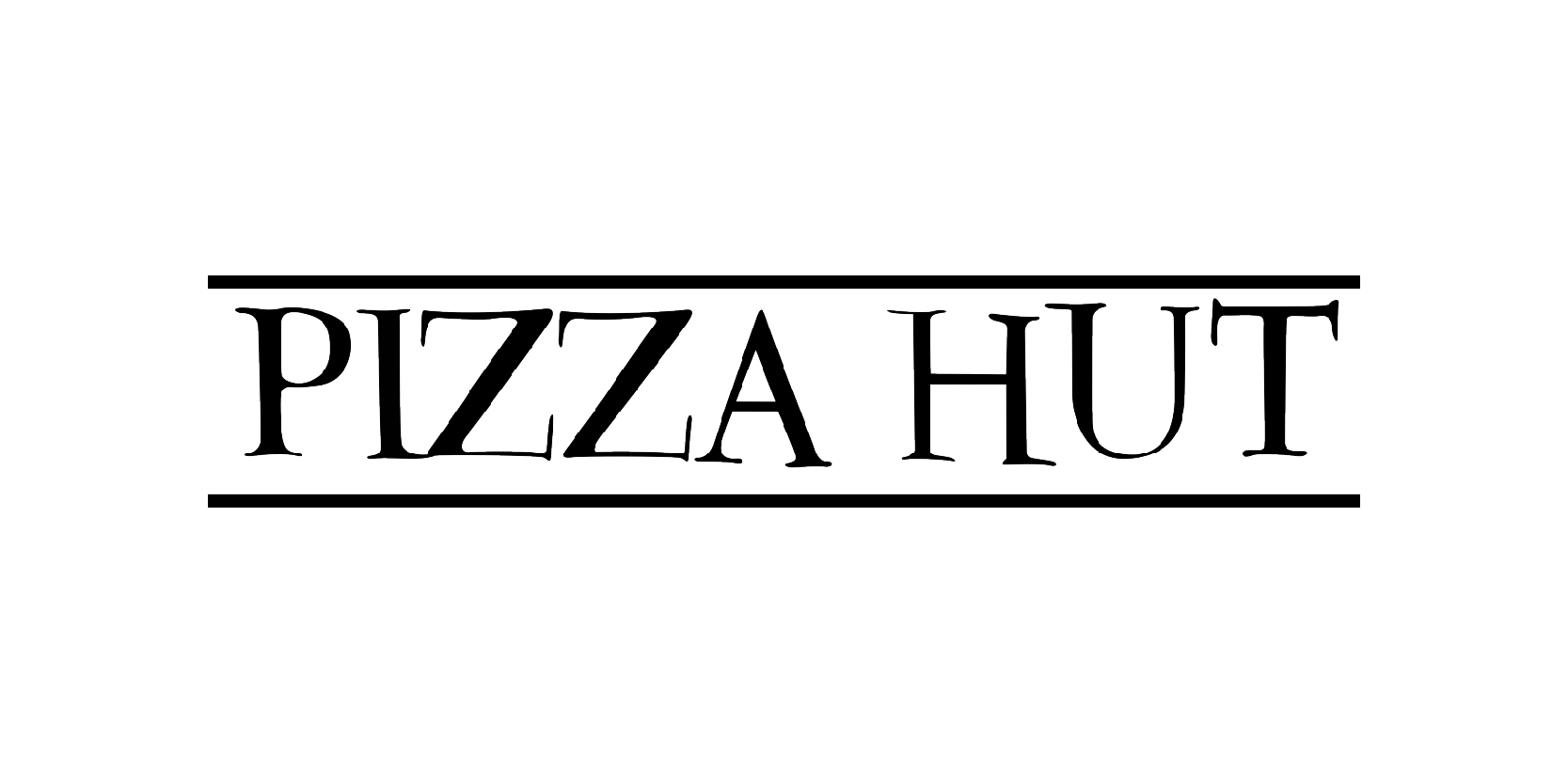
This version of the Pizza Hut logo, used in the early 1960s, took on a much more straightforward and traditional look compared to the brand’s very first design. It featured the name “Pizza Hut” in a clean, serif typeface, framed by two simple horizontal lines above and below.
Unlike the bold, playful lettering that came later, this logo leaned toward a more formal and no-nonsense style, almost giving it a classic, newspaper-like feel. While it may not have had the personality or warmth of later logos, it reflected the brand’s early stage of growth, when Pizza Hut was still establishing itself as a reliable place to enjoy a new kind of dining experience. It was simple, recognizable, and laid the groundwork for the creative logos that followed.
1970s logo: 1970-1974
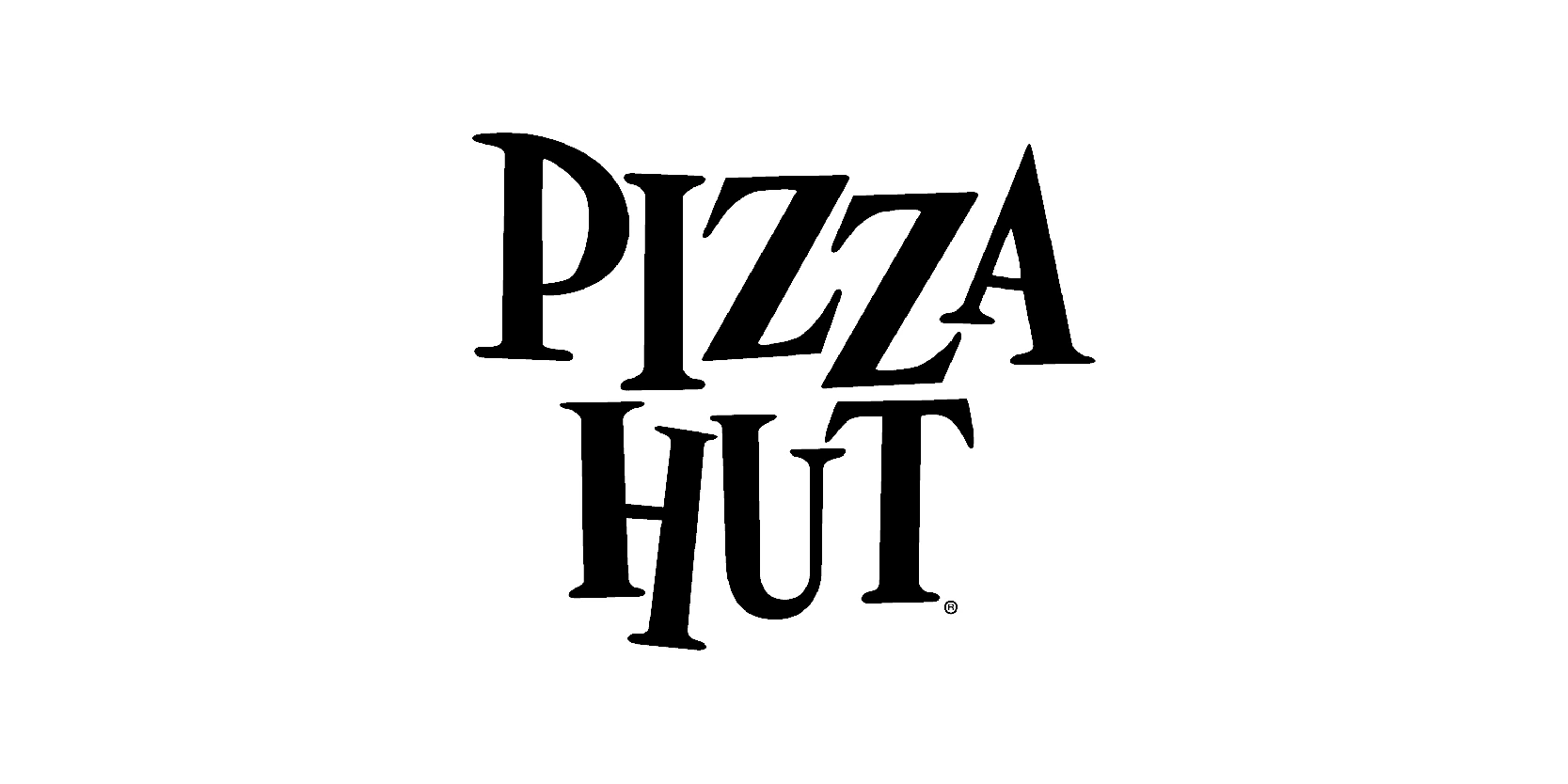
The Pizza Hut logo from 1970 to 1974 marked a big shift in personality and style for the brand. Unlike the more conservative earlier versions, this design embraced a bold, playful, and almost whimsical look.
The words “Pizza Hut” were stacked vertically, with tall, exaggerated letters that leaned at different angles, giving the logo a lively and slightly quirky character. The uneven arrangement added movement and charm, making it feel more inviting and less formal.
This logo captured the casual, fun dining experience Pizza Hut was trying to promote during the 1970s, a time when pizza was becoming more popular as a family and social meal. It stood out, reflected the era’s creative design trends, and helped Pizza Hut build a stronger, more recognizable identity.
Modernization: 1974-1999
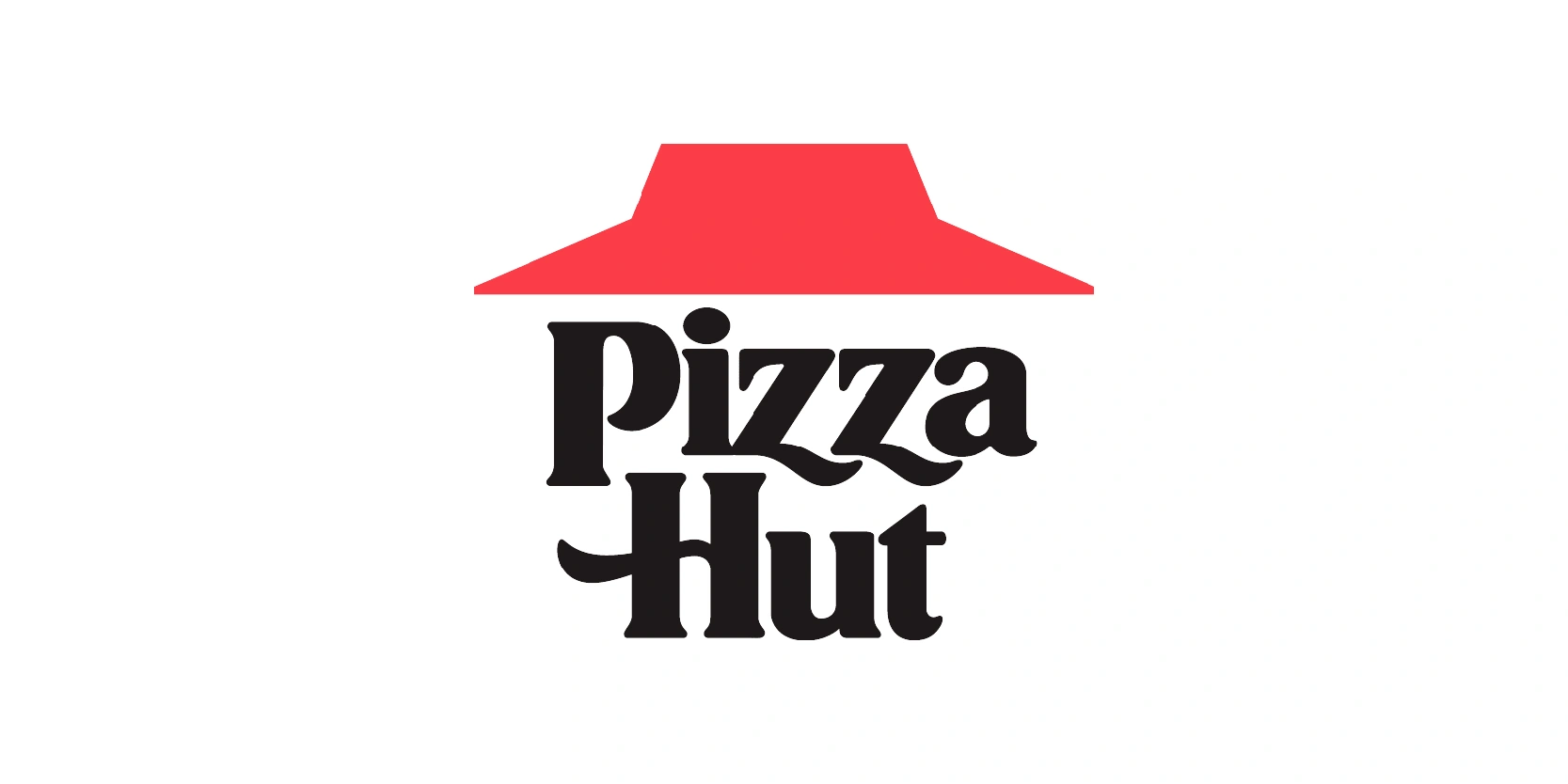
The Pizza Hut logo introduced in 1974 became one of the most iconic and recognizable designs in the brand’s history. This version featured the now-famous red roof, a symbol that quickly became synonymous with the restaurant itself. Placed above the name “Pizza Hut,” the roof gave the logo a friendly, welcoming feel, almost like inviting customers into a cozy place to eat.
The typography, with its bold black lettering and slightly playful curves, balanced professionalism with approachability. Unlike earlier experimental styles, this design struck the perfect mix of fun and stability, making it timeless.
The red roof wasn’t just a graphic choice—it mirrored the actual design of Pizza Hut restaurants at the time, reinforcing brand identity both inside and outside. Used for over two decades, this logo defined Pizza Hut visually and helped it stand out as a global leader in the pizza industry.
2000s logo design trend: 1999-2010
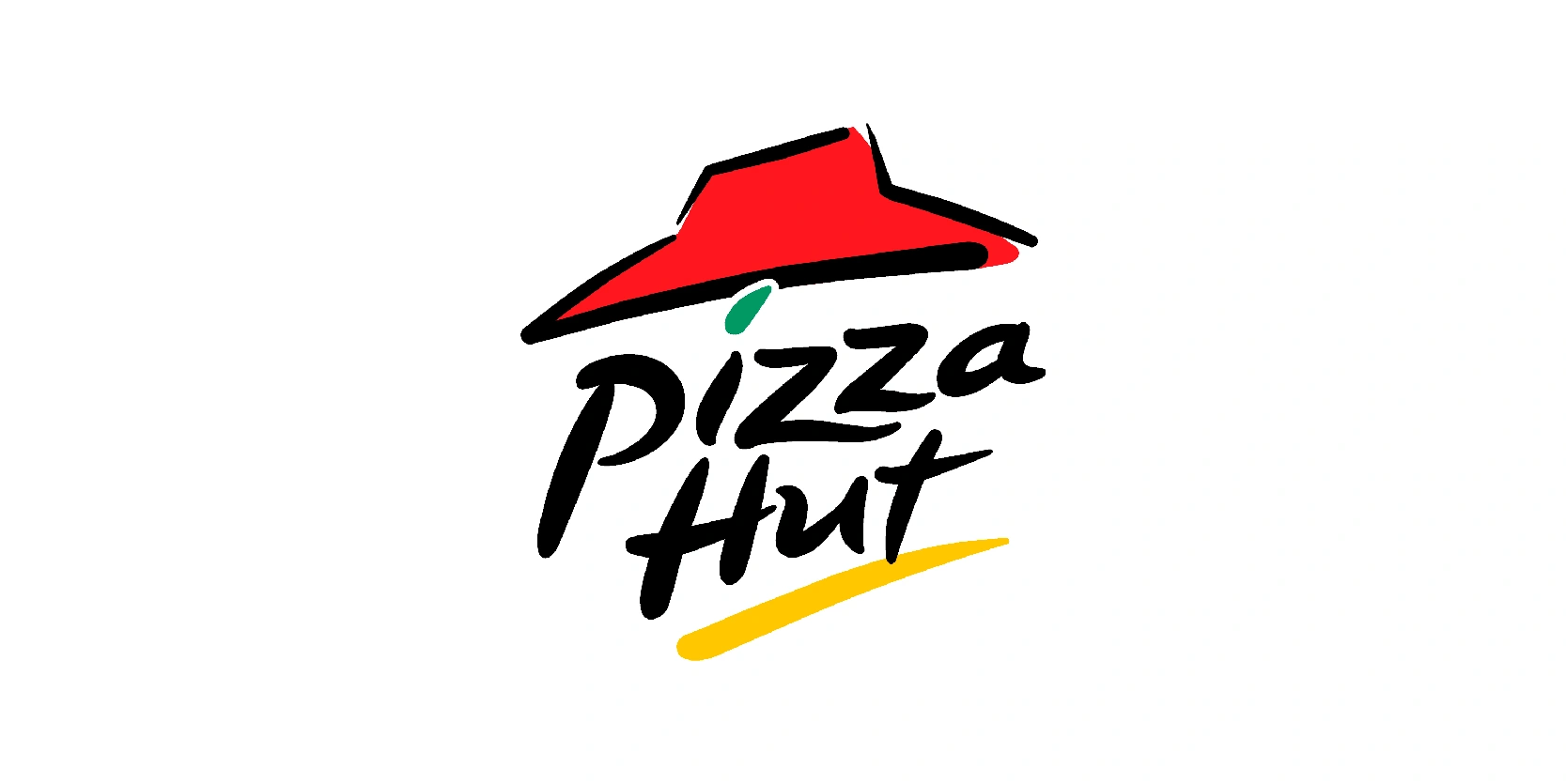
The Pizza Hut logo used from 1999 to 2010 is one of the most recognizable and dynamic versions in the brand’s history. It features the iconic red roof, a long-standing symbol of Pizza Hut’s identity, rendered in a more modern, hand-drawn style that adds energy and approachability.
Below the roof, the name “Pizza Hut” is written in bold, playful black script, giving the logo a casual and inviting feel. A small green dot above the “i” adds a touch of freshness, often interpreted as a nod to vegetables or natural ingredients, while the swooping yellow underline provides balance and warmth, symbolizing melted cheese or a pizza base.
This colorful combination of red, black, green, and yellow created a lively and appetizing image. The design reflected the brand’s push toward a more contemporary, fun, and family-friendly appeal during the early 2000s, while maintaining its traditional red roof heritage.
New look: 2008-2017
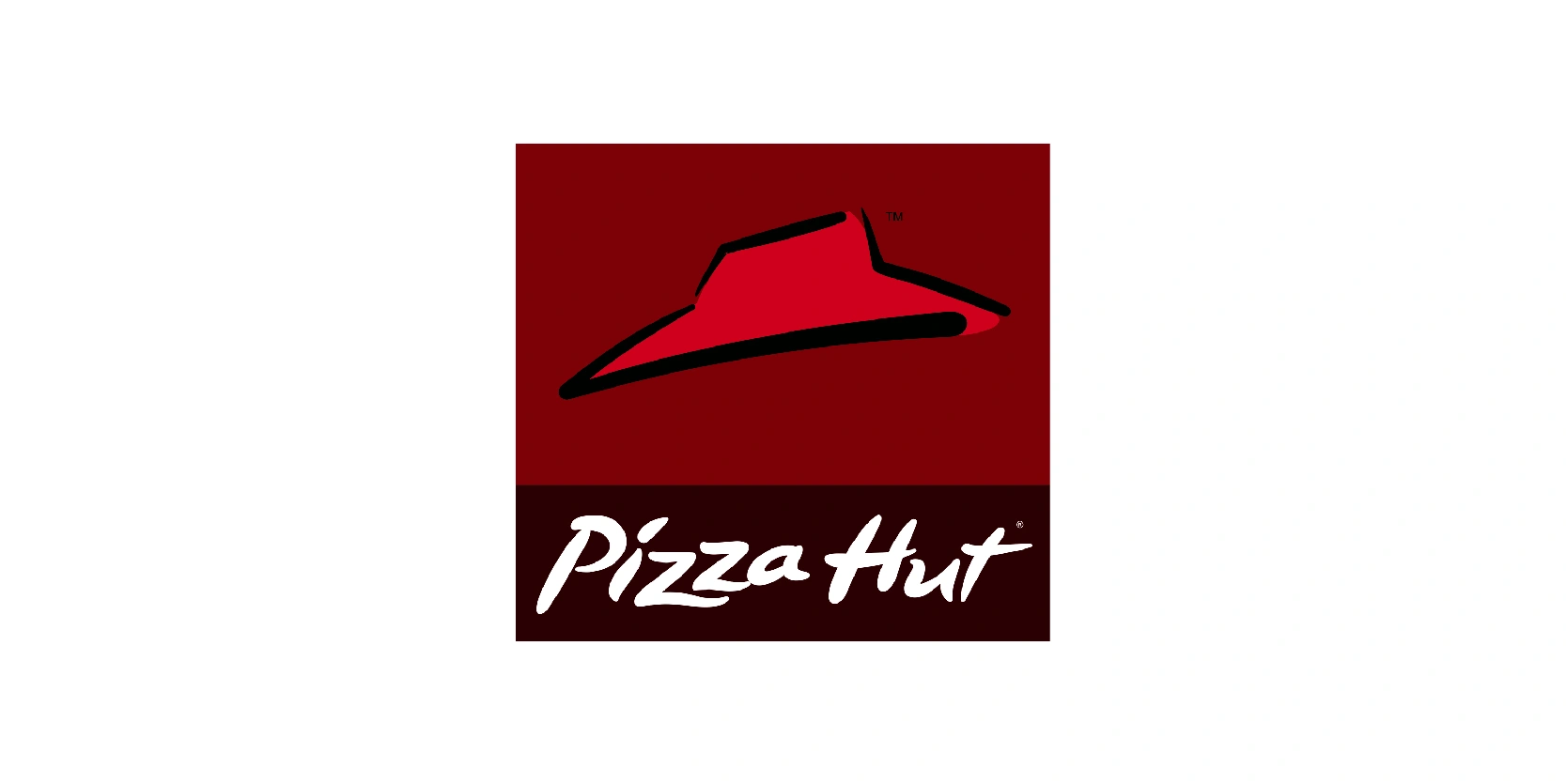
The Pizza Hut logo introduced in 2008 and used until 2017 brought a more refined and contemporary look to the brand’s identity. The design retained the famous red roof icon, a symbol that has been synonymous with Pizza Hut for decades, but it was set against a bold red background, making the emblem feel stronger and more modern.
The roof design appeared sleeker, with smoother curves and darker shading to give it depth and dimension. Beneath the roof, the brand name “Pizza Hut” was written in a casual, handwritten-style white font against a dark maroon panel, creating a strong contrast that emphasized readability. This version focused more on sophistication compared to earlier playful designs, reflecting Pizza Hut’s efforts to appeal to a broader audience while keeping its core identity intact. It was a step toward modern branding, blending tradition with a clean, contemporary edge.
Falling into the 2010s trend: 2010-2014
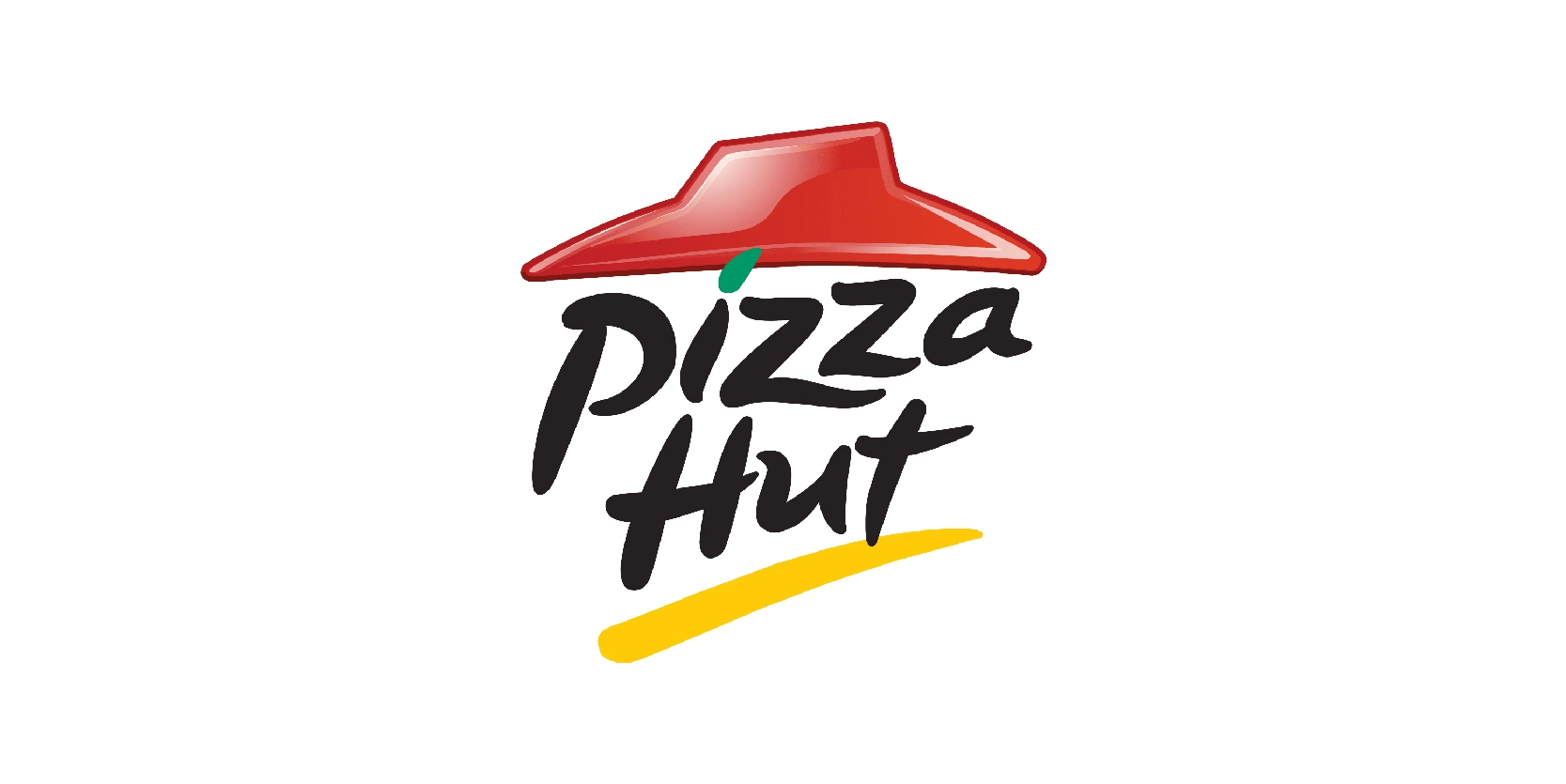
The Pizza Hut logo used between 2010 and 2014 refreshed the brand’s visual identity while keeping its familiar elements intact. The iconic red roof remained the centerpiece, but this time it was given a glossy, three-dimensional effect with shading and highlights, making it appear more polished and modern.
The typography underneath retained its casual, handwritten style in bold black, creating a friendly and approachable tone. The small green accent above the “i” added a sense of freshness and vibrancy, while the sweeping yellow underline symbolized warmth and energy, often associated with melted cheese or the joy of sharing pizza.
This version was designed to feel more dynamic and appealing in the digital age, aligning with Pizza Hut’s efforts to modernize its image while holding onto its recognizable heritage. It combined tradition with contemporary design, making it versatile across packaging, advertising, and online platforms.
Typography adjustments: 2014
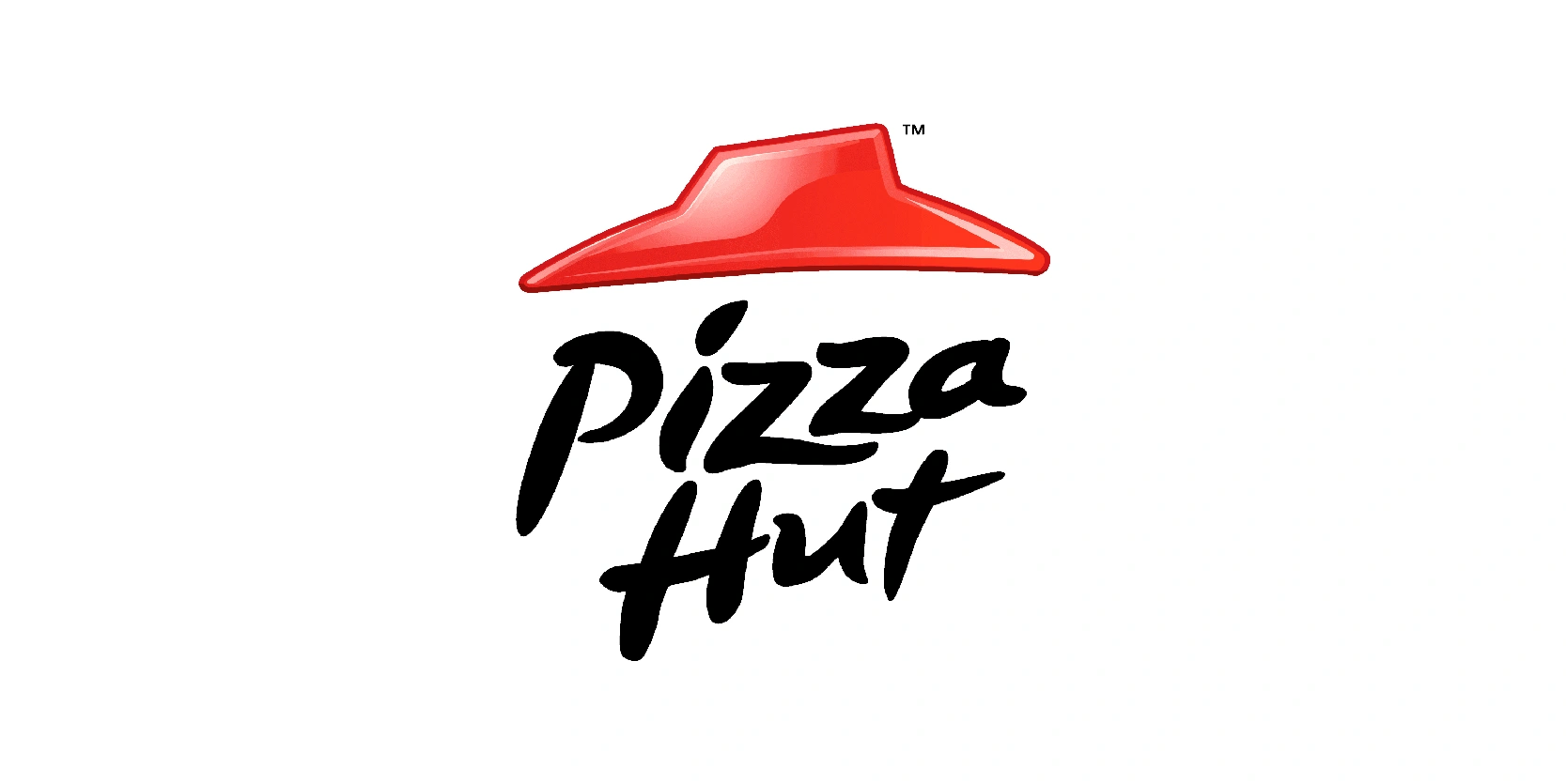
The 2014 Pizza Hut logo dropped the little green dot above the “i” that had been used in previous versions. Instead, it leaned fully into simplicity while keeping the iconic red roof “hat” as the star of the design. The roof sat above the words Pizza Hut, which were written in a smoother, hand-drawn black script. The playful yellow swoosh was also removed, making the logo look cleaner and more streamlined compared to the colorful, energetic versions of the 1999–2010 and 2010–2014 eras.
This change was intentional, Pizza Hut wanted a modernized, flatter look that worked well across digital platforms and packaging, without the extra decorative elements. It was the last step before the brand shifted in 2019 back to its retro-inspired red roof logo, which tapped into nostalgia and heritage.
2014-present
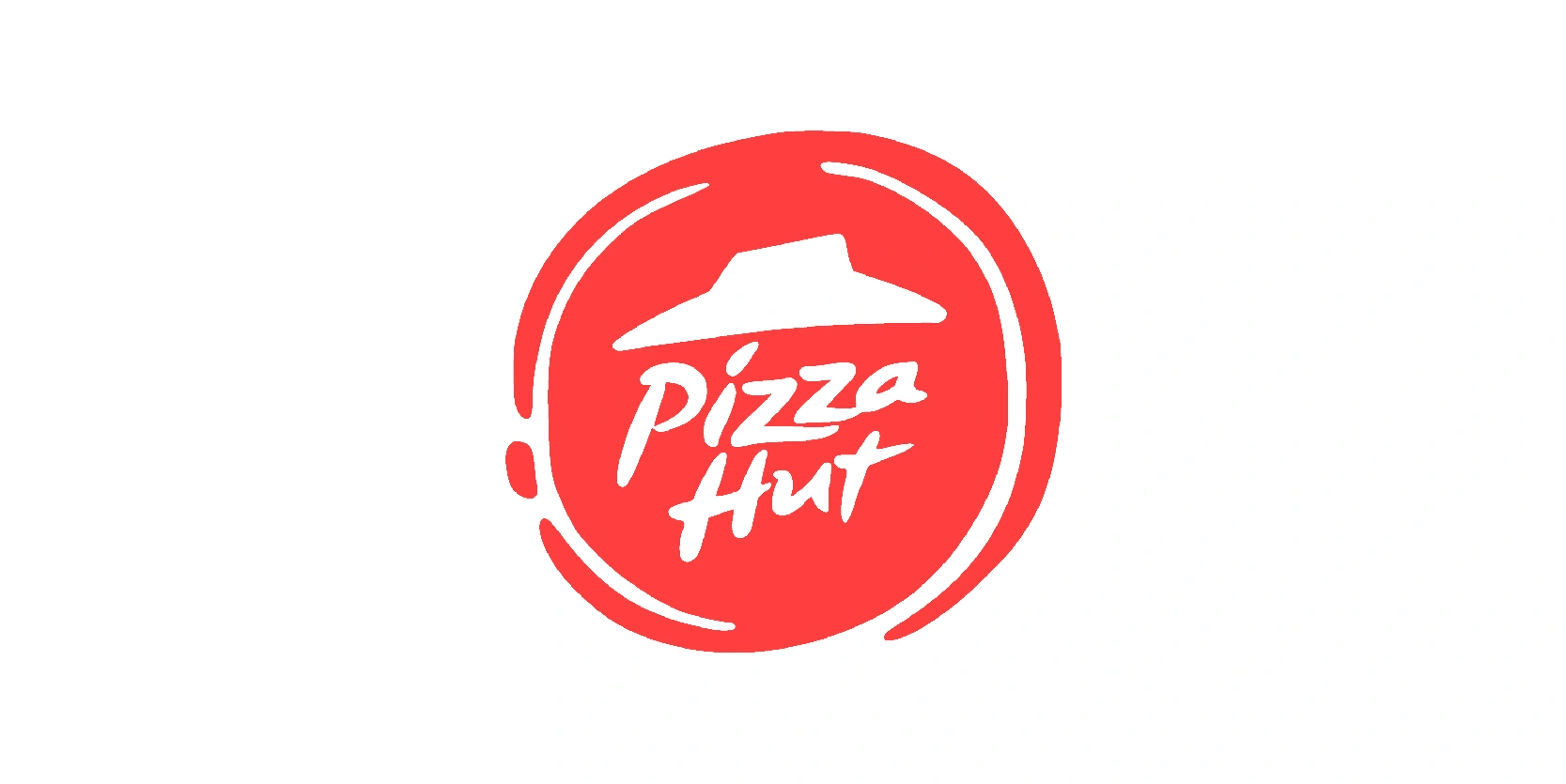
The Pizza Hut logo introduced in 2014 marked a significant shift in the brand’s visual identity. Moving away from the glossy, 3D look of earlier versions, this logo adopted a flat, modern design in line with contemporary branding trends. The familiar red roof remained at the center but was simplified and placed inside a red circle, creating a bold, unified emblem.
The circle symbolized a pizza, reinforcing the brand’s core product, while the roof added instant recognizability. The “Pizza Hut” lettering was kept in its casual, handwritten style but rendered in white, ensuring strong contrast against the red background.
This redesign was part of Pizza Hut’s global rebranding effort, which emphasized a fresher, more youthful, and digital-friendly appearance. By embracing minimalism and flat design, the 2014 logo reflected the brand’s adaptation to modern consumer expectations while preserving its iconic identity.
2019-today
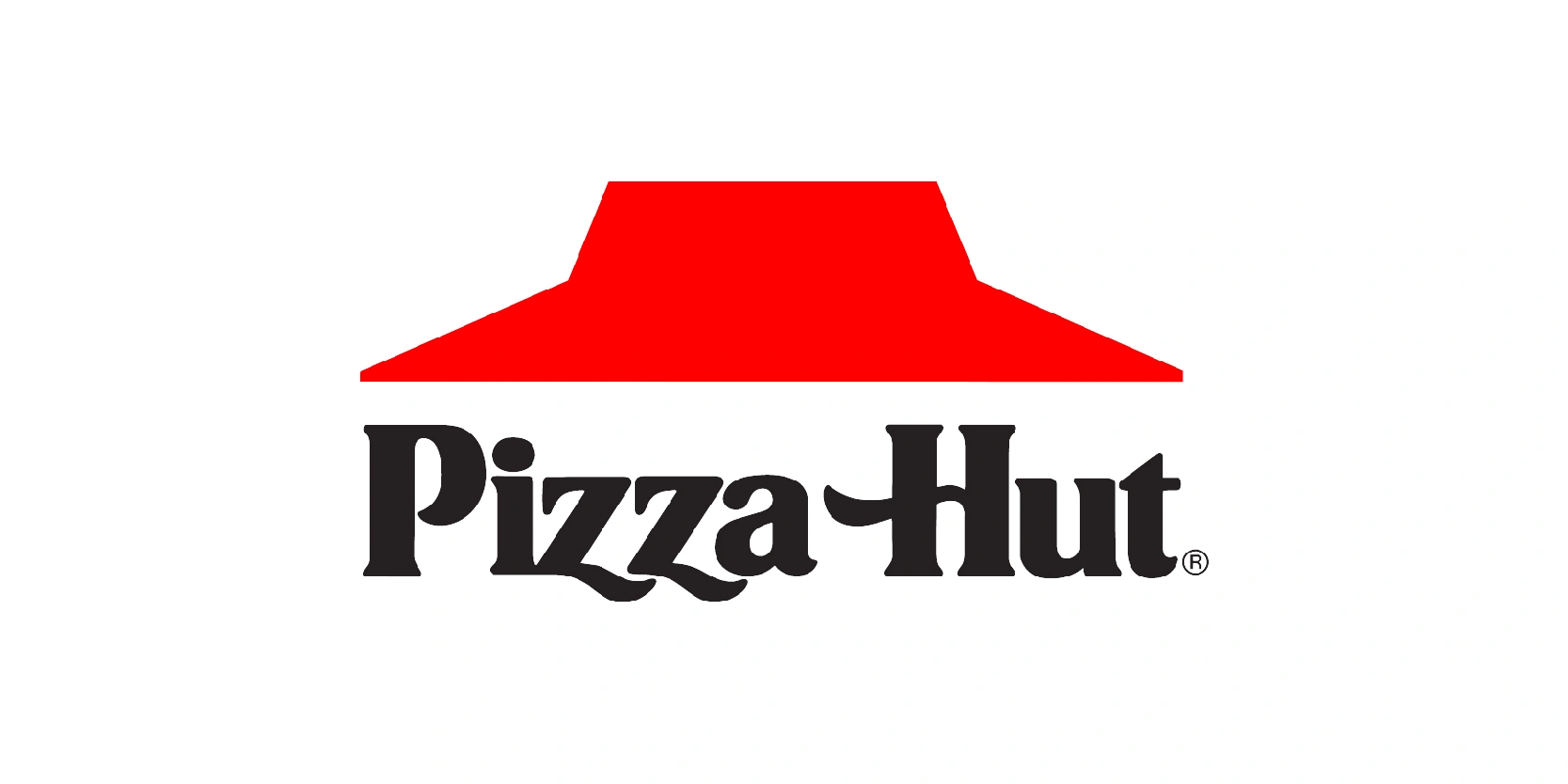
The 2019–present Pizza Hut logo brings back a sense of nostalgia while staying relevant in modern branding. It reintroduces the iconic red roof design, which has been associated with Pizza Hut since the 1960s, symbolizing the brand’s heritage and familiarity. The roof sits above the bold, black “Pizza Hut” wordmark written in a playful, serif-style font that conveys warmth and friendliness.
This return to a retro-inspired look was intentional, as the company aimed to remind customers of its roots while reinforcing its identity as a family-oriented restaurant. The clean, simplified design works effectively in both digital and print formats.
Overall, the logo balances tradition and a modern feel, emphasizing Pizza Hut’s long-standing reputation in the global pizza market.
The logo history of Pizza Hut stretches across many decades
The history of Pizza Hut’s logo design reflects more than just aesthetic changes, it tells the story of a brand constantly evolving to stay relevant while honoring its roots. From the introduction of the famous red roof in the 1960s to the playful, colorful versions of the late 1990s and 2000s, each redesign has captured the spirit of its era.
The 2014 update, on the other hand, simplified the look for a digital-first world.. Through every shift, the iconic roof has remained a constant symbol of comfort, familiarity, and shared meals. Pizza Hut’s visual journey proves that a well-crafted logo not only identifies a brand but also grows with it, carrying decades of tradition into the future.
